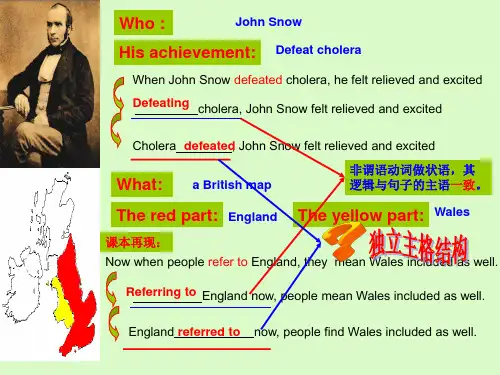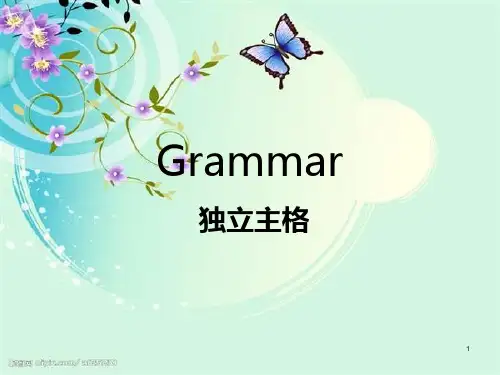-ing作状语的基本用法 用法1:v-ing作_时__间____状语。
When he walked out of the room, he saw a dog. 当他走出房间时,他看见一只狗
W__a_l_k_i_n_g____(walk) out of the room, he saw a dog.
Seeing
2. Arrived at the gate of our classroom, I found my head teacher standing there. Arriving
3. Encouraging by the teacher’s words, we decided to work hard. Encouraging
Please work out the problem _u__si_n_g_______(use) another way.
1.Walking out of the room, he saw a dog. 2.Feeling sleepy, he couldn’t focus on the class now. 3.Studying hard, we will get good results. 4.Knowing it is difficult , I don’t give up. 5.He was absorbed in studying ,forgetting to eat. Conclusion:动词的现在分词作状语可表示_时__间____,_原___因____,__条___件___, __让___步_____,__结___果_____伴随,方式等情况。
用法2:v-ing作__原__因___状语。
Because Mr. Panda felt sleepy, he couldnபைடு நூலகம்t focus on the class now. 因为熊猫先生很困,他无法集中精神听课.








